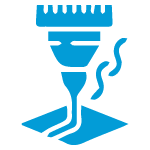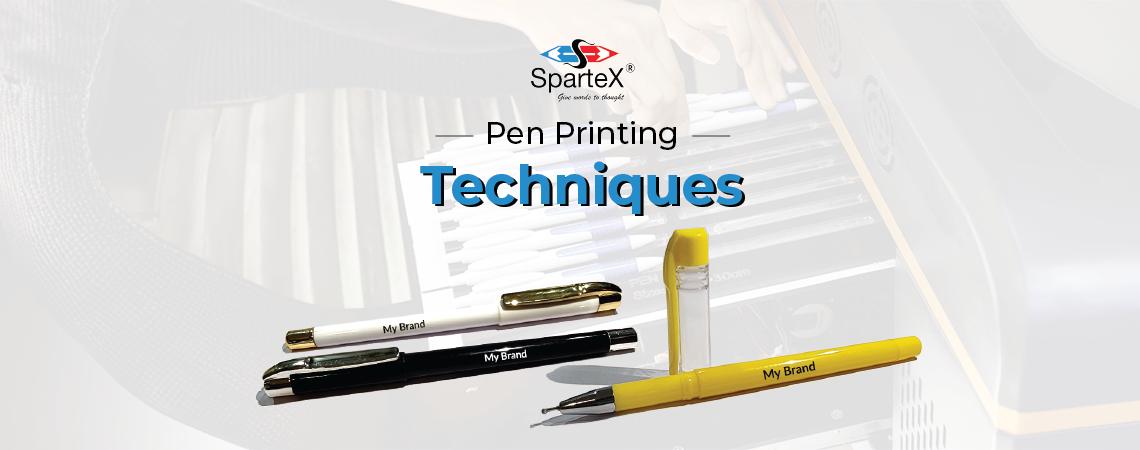Gifting a writing instrument, particularly a well-crafted pen, is a timeless gesture of appreciation. However, a personalized pen inscribed with a name, logo, or thoughtful message elevates this gesture to a whole new level, transforming it into a cherished keepsake. Custom pens have also become a popular promotional tool for businesses, allowing them to leave a lasting impression on potential customers.
Choosing the optimal printing technique is paramount for brands and individuals seeking to personalize pens. This technical guide delves into the most widely employed pen printing techniques, meticulously exploring their inherent advantages, limitations, and suitability for various design complexities and pen material compositions.
This blog will provide a comprehensive guide to the various printing techniques used in making custom pens to make informed decisions and extract the most advantage during production.
Understanding Pen Printing Techniques
Pen printing techniques can be broadly classified into two distinct approaches:
- Printing: This method involves applying ink or other materials directly onto the pen’s surface to create a design—for example, Pad printing, screen printing, digital printing, etc.
- Engraving: This process removes material from the pen’s surface to create a permanent design. Laser engraving stands as the most widely used engraving technique for pen customization.
Selecting the Optimal Technique
The ideal pen printing technique hinges on certain factors, including:
- Design Complexity: While simple designs with limited color palettes might be compatible with a wider range of techniques, intricate designs or full-color images necessitate specific methods.
- Pen Material: The composition of the pen, whether metal, plastic, or wood, significantly influences its compatibility with different printing methods.
- Budgetary Constraints: Certain techniques, such as pad printing, are cost-effective for bulk orders, whereas others, like laser engraving, might be more suitable for smaller batches.
Pen Printing Techniques: A Detailed Guide

Pad Printing
Pad printing employs a silicone pad to transfer ink from a designated printing plate onto the pen’s surface. The pad’s inherent flexibility enables printing on curved or uneven surfaces.
Advantages
- Cost-effective for large-volume orders
- Capable of rendering complex designs with multiple colors
- Produces durable and long-lasting prints

Screen Printing
This traditional method utilizes a meshed stencil to transfer ink onto the pen’s surface. A squeezer pushes the open areas of the stencil, thereby creating the desired design.
Advantages
- Cost-effective for large orders with uncomplicated designs
- Offers vibrant and opaque colors
- Can accommodate various ink types, including metallic or fluorescent options

Digital Printing
A specialized UV inkjet printer meticulously applies tiny ink droplets directly onto the pen’s surface, creating a digital image
Advantages
- Ideal for high-resolution designs
- Offers faster turnaround times
- It can be utilized for variable data printing (e.g., individual names)

Laser Engraving
A laser beam vaporizes a minute portion of the pen’s surface, creating a permanent design. The depth and color of the engraving depend on the pen’s material composition
Advantages
- Permanent and tamper-proof
- Creates a professional, high-quality aesthetic
- Works on various materials like metal, wood, and some plastics

Foil Printing
A thin layer of metallic foil is heat-pressed onto the pen’s surface, creating a shiny, metallic design.
Advantages
- It offers a luxurious and eye-catching finish
- Well-suited for logos and simple text
- Durable and scratch-resistant

Sticker Printing
A custom-designed sticker featuring the desired message or logo is printed and then adhered to the pen’s surface.
Advantages
- Cost-effective option.
- Offers a wide range of design possibilities,
- Easy customization with variable data
Conclusion
The optimal pen printing technique is selected after a meticulous evaluation of the design requirements, pen material, desired aesthetic outcome, and budgetary constraints. By understanding the strengths and limitations of each technique, you can make an informed decision that ensures a high-quality, long-lasting, and visually appealing personalized pen.
Get in touch with us for an instant quote!
Request Quote
